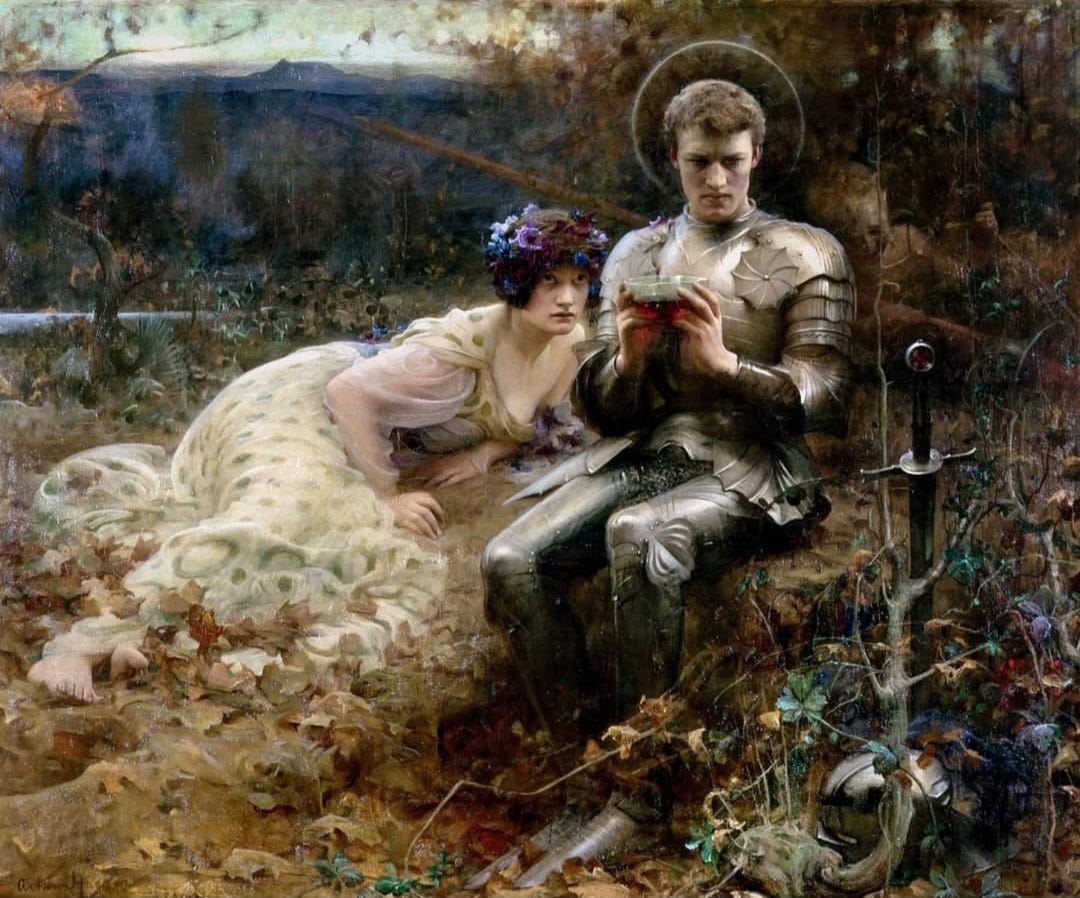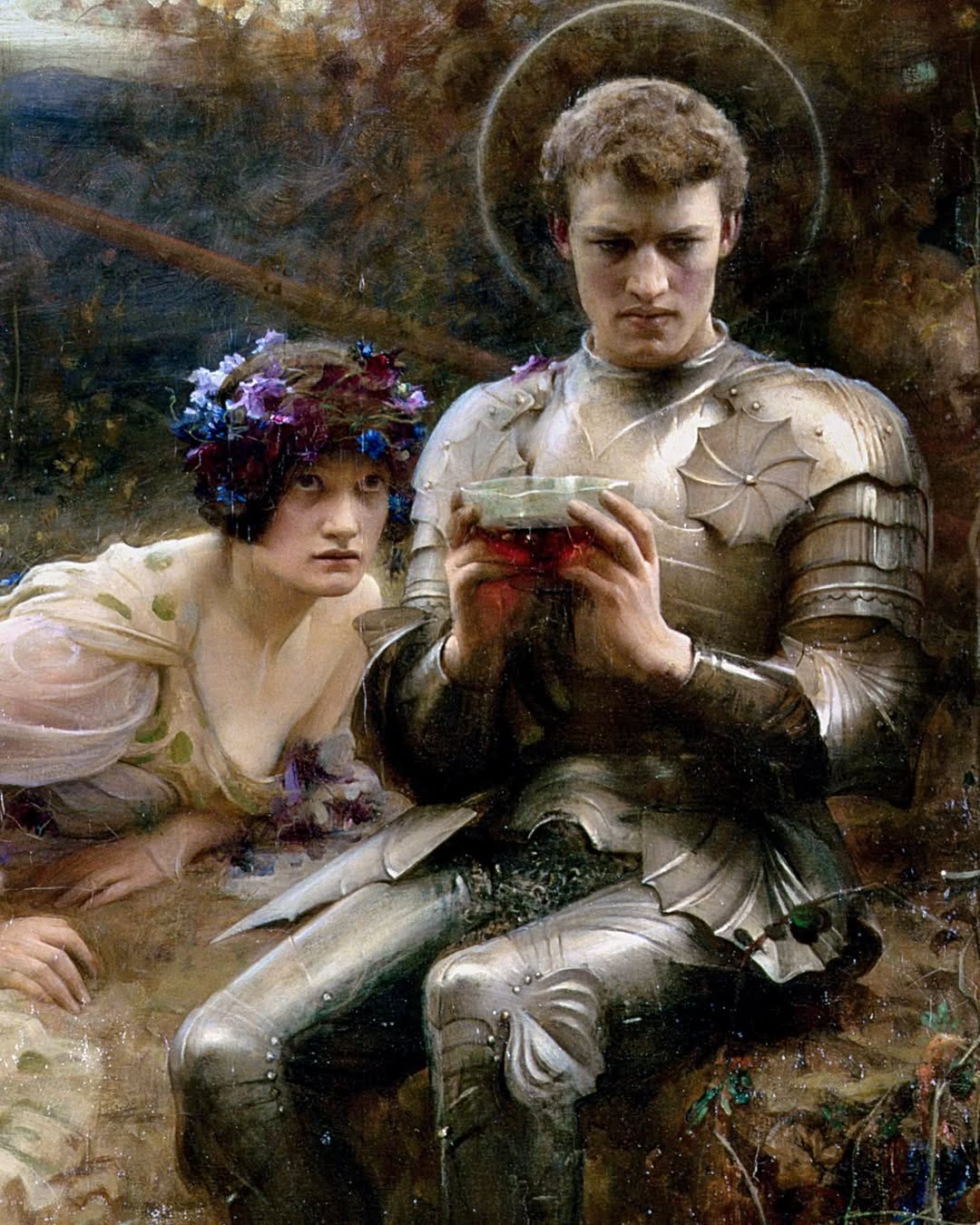ARTHUR HACKER - THE TEMPTATION OF SIR PERCIVAL, 1894
The painting depicts a moment in the Arthurian legend from Thomas Malory’s Le Morte d’Arthur in which Sir Percival, one of King Arthur's Knights of the Round Table, faces a profound spiritual and moral trial during his quest for the Holy Grail. In the scene, Percival is tempted by a demon disguised as a beautiful woman who offers him wine and carnal desire, attempting to distract him from his sacred mission. Although initially drawn in by the wine, Percival notices his sword lying on the ground nearby, its handle forming a cross. This sight reminds him of his knightly oath and spiritual duty, prompting him to make the sign of the cross and pray. As a result, the illusion of the woman vanishes into smoke, and the temptation is overcome. Percival then feels remorse and punishes himself, reaffirming his commitment to righteousness and his quest.
Hacker, influenced by the Pre-Raphaelite Brotherhood, adopted their emphasis on vivid colors and symbolic narratives. The painting’s rich palette and focus on medieval themes reflect the Pre-Raphaelite fascination with romanticized history and moral allegories. Artists like Dante Gabriel Rossetti and Edward Burne-Jones, who also explored Arthurian subjects, shaped Hacker’s approach to blending sensuality and spirituality. As a British artist trained at the Royal Academy and influenced by his travels in Spain and North Africa, Hacker was known for blending classical techniques with romantic and symbolic subjects. His interest in dramatic narratives and emotional depth, evident in works like The Annunciation (1892), likely drove him to choose a scene of high moral stakes like Percival’s temptation.
This piece reflects the artist's bold navigation of Victorian tensions between sensuality and morality, a tightrope walk that made the painting both captivating and provocative for its time. Hacker, was known for his daring depictions of seductive female figures, as seen in earlier works like Pelagia and Philammon (1887), which stirred controversy for its overt eroticism. Here, he channels this fascination into the demonic temptress, whose alluring pose and beauty pushes the boundaries of Victorian propriety. Yet, by framing her as a demon and contrasting her with Percival’s faith—symbolized by the glowing cross of his sword hilt—Hacker cleverly cloaks this sensuality in a moral narrative, appeasing conservative audiences while indulging his artistic interest in the femme fatale archetype.




